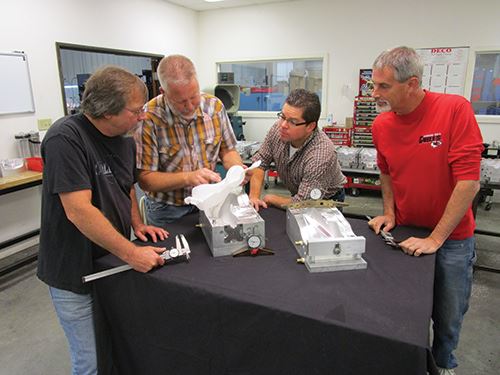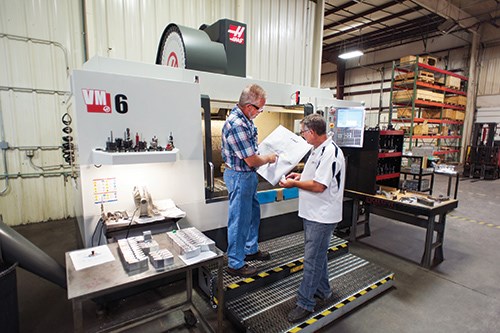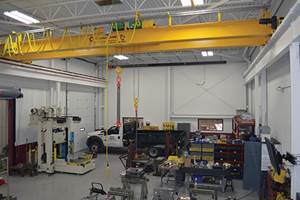Improve Profitability with Supplier Collaboration
Developing a strong and effective supply chain can benefit both the moldmaker and its customers.
Being “first to market” is a common goal for manufacturers in this industry, but the reality may actually be quite different when there is ineffective supply chain management. For example, brand owners often are extremely successful in finding design firms that can come up with very creative packaging, but applying that design to an actual product proves difficult when the design cannot be molded. This is a supply-chain management challenge.
The opportunity for mold manufacturers lies in developing a supply chain that maximizes success in the marketplace by avoiding mistakes with upfront collaboration, averting costly backlogs, aligning manufacturing capacities with growing demand, and ensuring that raw materials and products from supply-chain partners are delivering value.
Shops should strive to make customers more profitable, to generate a greater return on investment (ROI) and to beat the expectations of the marketplace. This can be accomplished by building relationships and growing partnerships that yield an effective supply-chain timeline for those customers.
Supply Chain Strategy
According to an article titled “Five Lessons for Supply Chains from the Financial Crisis,” published in the September/October 2013 issue of Supply Chain Management Review, there are five “action items” that are essential to developing an effective supply chain: 1) gain a clear understanding of potential demand scenarios, 2) avoid any critical bottlenecks, 3) create flexibility that can cope with all types of variability, 4) reduce inventory to free up cash and 5) begin to position yourself for the inevitable market upswing.
Let’s examine each of these five lessons as they relate to the impact of the latest recession on the moldmaking supply chain.
1. Potential demand scenarios. During the financial crisis that began in 2008, customer demand was difficult to reliably forecast. Opportunistic competitors filling capacities increased this uncertainty. Long-standing orders or contacts were subject to cancellation due to lack of customer demand. An overly optimistic sales force, driven by budget thinking, also made getting effective and accurate sales forecasts more challenging. In order to produce more reliable short-term forecasts for future business, increased communication with your customer base is necessary. Focus on multiple “what if” scenarios. Ask yourself: What is our worst case scenario? What if all of our customers implement temporary plant shutdowns? How does this lack of new demand affect our business model and overhead costs?
2. Bottlenecks. During the recent recession, sales and customer demand reached all-time lows. Manufacturers risked losing suppliers and possibly entire supply chains due to bankruptcy. Shops were now asking: What critical parts and how much volume are obtained from our suppliers? What is the real potential for supplier defaults, and how will this affect business? Do we proactively align with suppliers with respect to new delivery schedules?
3. Flexibility. With uncertain customer demand, numerous businesses experienced overcapacity and struggled to correct their operations in the short term. Businesses closed or idled assets with lower productivity while considering the incremental costs of moving production to other plant facilities. In contract negotiations, successful companies considered fluctuations in demand when defining their contracts. The question here became: How do companies provide the most flexibility with regards to changes in demand?
4. Inventory reduction. The limited availability of credit from financial institutions during the financial crisis required firms to free up significant amounts of cash on short notice. The significant reduction in sales slowed the outflow of goods to customers, who were consuming their usual inventories, but at a lower rate. Safety-stock inventory levels were reduced. Managers avoided surplus inventory intake, adjusted inventory levels and managed their service offerings to customers on a value-add basis.
5. Position. As the financial crisis began to ease, some managers were caught off guard by the sudden economic upturn. Companies that were in touch with their markets were prepared for the upturn and managed to gain significant market share by meeting customer demands while competitors struggled. In addition, with the length of the crisis unclear, visionary companies realized the importance of retaining and developing talent throughout the recession, as well as maintaining and growing their levels of expertise.
The Customer Approach
With these strategies and lessons-learned in mind, you can improve management of your supply chain. Keep your customer approach simple and straightforward, be consistent and predictable, and establish and maintain an environment of trust. Here are three specific steps to take:
1. Collaborate early. For each new project, work with your customer up front to gather significant knowledge that will help that customer move quickly through the design approval process. This will decrease project timelines to enable a quicker return on investment and to increase the company’s profitability sooner.
2. Leverage your engineering knowledge. This knowledge includes mold design experience that can actually mold the designed product in the shortest timeline possible. It also includes your experience with various machine platforms.
3. Improve your response rate. A customer’s success and profitability is dependent upon its suppliers, so when a new mold design is needed, your design/engineering staff must be available and quick to respond. Gathering information about a plant’s machine platforms at the start of the collaboration will also help to maximize the customer’s productive man-hours and return on investment. All of this helps moldmakers reduce engineering design time for a project, compress the supply-chain timeline and reduce unit mold manufacturing time.
For example, Creative Blow Mold Tooling a maker of blow molds based in Lee’s Summit, Missouri, used these strategies to reduce the unit mold building time by a week for a mold used to make sample bottles. This reduction in pre-production mold build time allowed the moldmaker to test the bottle samples for design, function and expectation verification while the production molds were being built. In addition, effective communication and collaboration with the customer enabled the company to reduce the manufacturing time for the production mold by an additional seven days. Therefore, on this project, understanding the importance of return on investment for the customer allowed Creative to improve the supply-chain timeframe by 14 days, getting the customer to profitability sooner.
Collaboration is Key
Collaboration with customers as equal partners will reduce costs, improve product quality and promote innovation. It’s time to replace silo thinking, where the partners do not share information, with thinking outside of the box, and allow all parties involved in a project to have input in defining the new process to accomplish the goal.
Deliver support assistance, and product and process innovation beyond contractual obligations. Contracts can limit a company’s ability to be innovative and generate new products that will increase profitability and expand a customer’s market share. New ideas, processes and products come from collaborative thinking and discussions that keep the final goal in mind. In the end, you want to be an extension of your customer’s team, sharing in its success in delivering quality, innovative end products to the marketplace, and truly getting to market first.
Related Content
The Trifecta of Competitive Toolmaking
Process, technology and people form the foundations of the business philosophy in place at Eifel Mold & Engineering.
Read MoreThe Role of Social Media in Manufacturing
Charles Daniels CFO of Wepco Plastics shares insights on the role of social media in manufacturing, how to improve the “business” side of a small mold shop and continually developing culture.
Read MoreThink Safety: Eliminate Hazards Throughout the Shop
The tooling community is taking advantage of new products for safer mold shops and molding facilities.
Read MoreTackling a Mold Designer Shortage
Survey findings reveal a shortage of skilled mold designers and engineers in the moldmaking community, calling for intervention through educational programs and exploration of training alternatives while seeking input from those who have addressed the issue successfully.
Read MoreRead Next
Are You a Moldmaker Considering 3D Printing? Consider the 3D Printing Workshop at NPE2024
Presentations will cover 3D printing for mold tooling, material innovation, product development, bridge production and full-scale, high-volume additive manufacturing.
Read MoreReasons to Use Fiber Lasers for Mold Cleaning
Fiber lasers offer a simplicity, speed, control and portability, minimizing mold cleaning risks.
Read More



















